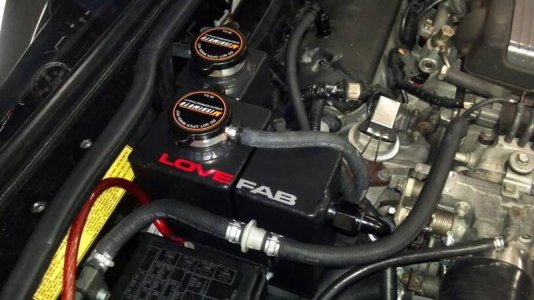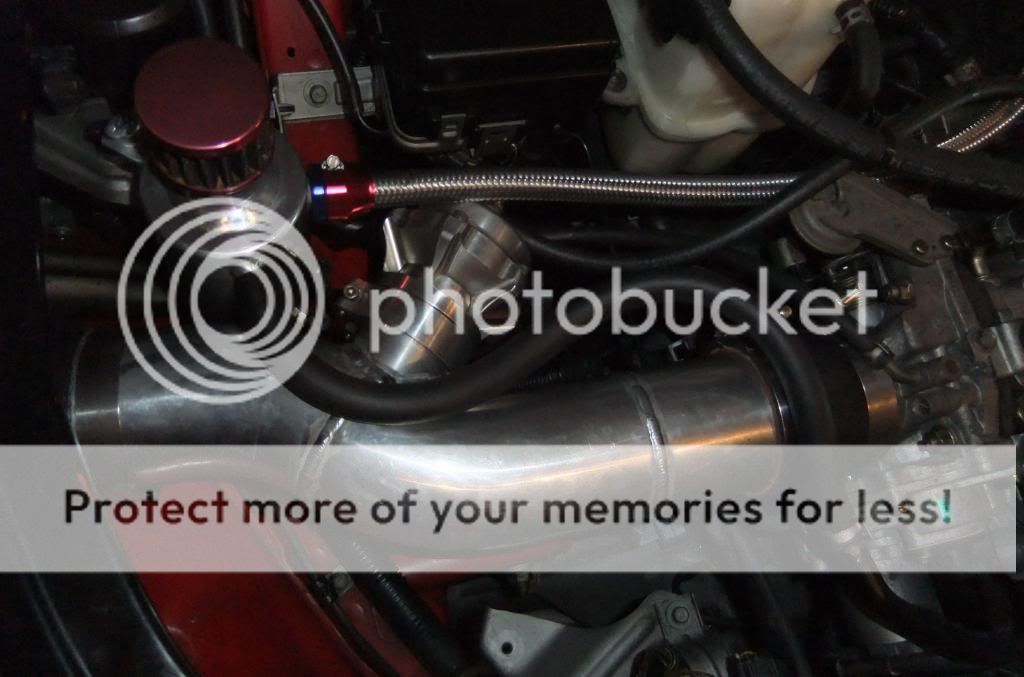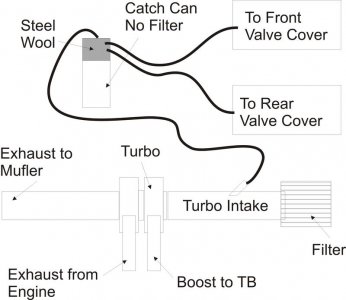I was gonna start a thread on todays oil change and this old one was bumped.
After about 4k miles between two oil changes I drained mine today and here is the disgusting goo:
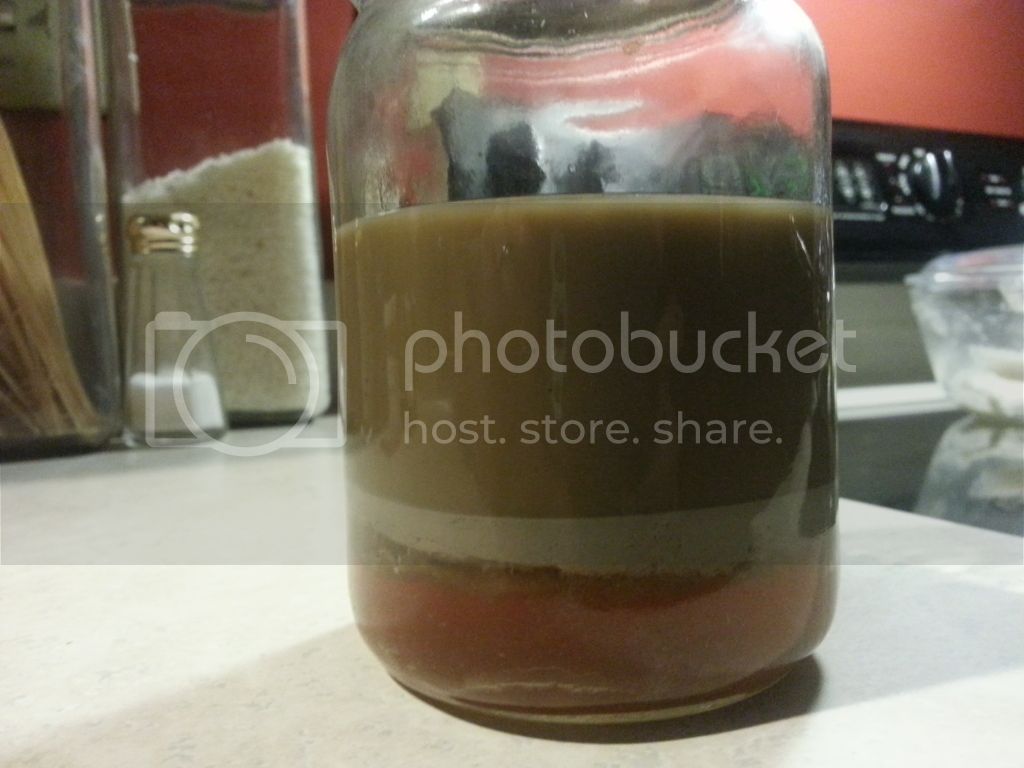
Update: After 3 days the contents had settled into 4 distinct layers:
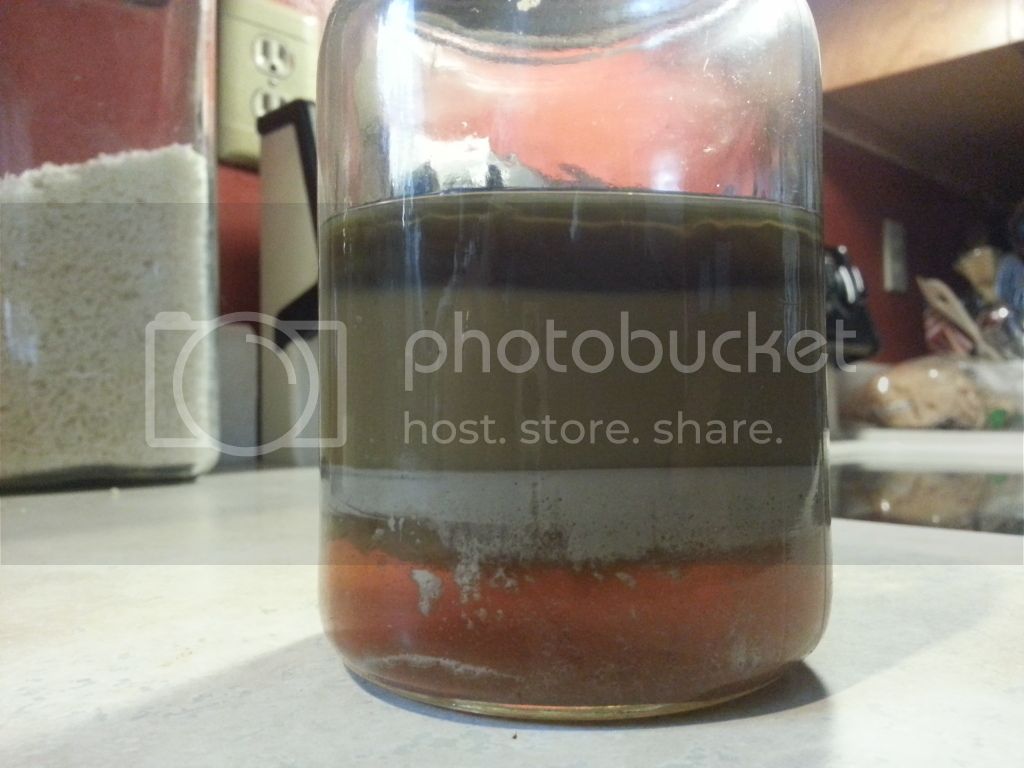
This presents with an odor between oil and gas. Kinda expected it to smell like bongwater but it still had an automotive type smell. I mean, it looks like people tell me bongwater smells like. Oh whatever... :smile:
No volume listed on the Kerr mason jar but I'm pretty sure that it is 16oz. So call the contents 12oz but this is after two oil changes over 5K miles. So 6oz per 2k miles since I changed my oil today after just 2K miles and it was really dirty. SouceOne did my last change when he did my dual carbon clutch install and while it was up in air I asked him to do a change. He used Mobil 1 5W - 30 that change and I used it for this change also. Since my LoveFab rebuild, a change every 2K has happened but not by design.
After Brian did the clutch I drove the car back to Cody for him to install an AEM series 2. And he routed the catch can gas discharge from vented to atmosphere to the intake stream. I doubt that this contributed to the dirty condition after 2K miles but it appears that where I used to change oil every 3K, the new rule is 2K because it was that bad visually. But, at 600+ whp maybe I'll be down to 2K between rear sets too.
After about 4k miles between two oil changes I drained mine today and here is the disgusting goo:

Update: After 3 days the contents had settled into 4 distinct layers:

This presents with an odor between oil and gas. Kinda expected it to smell like bongwater but it still had an automotive type smell. I mean, it looks like people tell me bongwater smells like. Oh whatever... :smile:
No volume listed on the Kerr mason jar but I'm pretty sure that it is 16oz. So call the contents 12oz but this is after two oil changes over 5K miles. So 6oz per 2k miles since I changed my oil today after just 2K miles and it was really dirty. SouceOne did my last change when he did my dual carbon clutch install and while it was up in air I asked him to do a change. He used Mobil 1 5W - 30 that change and I used it for this change also. Since my LoveFab rebuild, a change every 2K has happened but not by design.
After Brian did the clutch I drove the car back to Cody for him to install an AEM series 2. And he routed the catch can gas discharge from vented to atmosphere to the intake stream. I doubt that this contributed to the dirty condition after 2K miles but it appears that where I used to change oil every 3K, the new rule is 2K because it was that bad visually. But, at 600+ whp maybe I'll be down to 2K between rear sets too.
Last edited:


